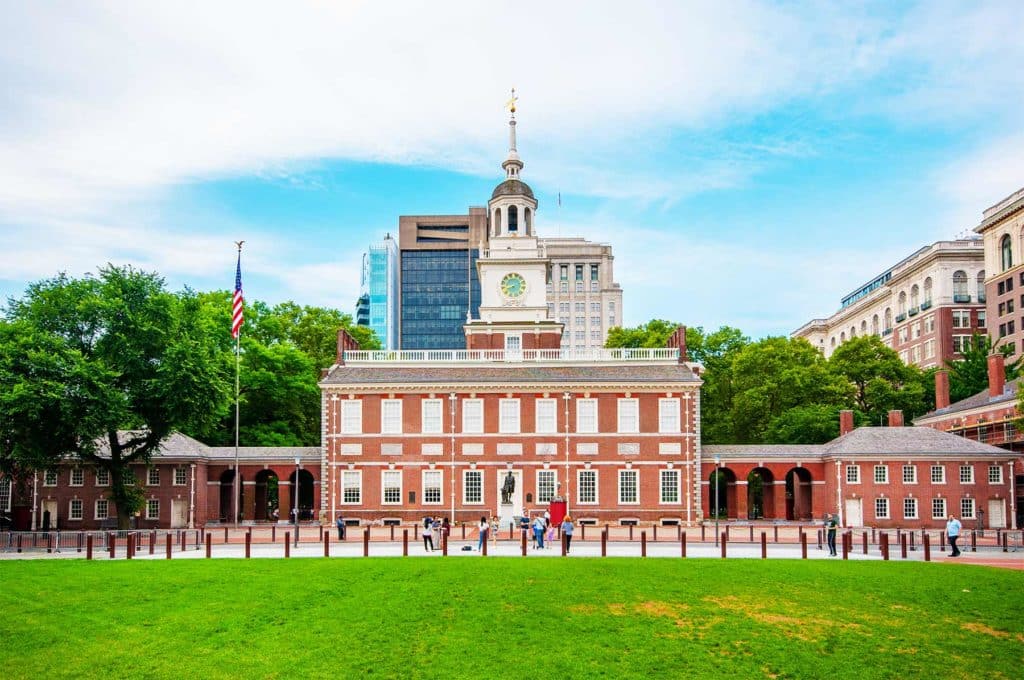
Revolutionary War Sites! If you’re a Revolutionary War buff (like me) then I’ve got a great article for you!
As a retired history teacher who now spends much of his time researching and writing articles, I’m going to share some of the interesting stories associated with each of these amazing Revolutionary War Sites.
In this article, we’ll go over our Top 10 list of Revolutionary War Sites to visit the next time you want to have a blast with the past.
We’ve got amazing forts, iconic battlefields, incredible landscapes, historic buildings and so much more.
Of course, there’s no substitute for actually going there and experiencing these amazing places yourself so without further ado let’s dive in with our Top Ten List.
Best Revolutionary War Sites
#10. Cowpens National Battlefield
Location: Cowpens, South Carolina
We begin at #10 with Cowpens National Battlefield.
Our national park sites have a story to tell about the history of our nation. It’s a story that goes beyond the textbooks by giving visitors the opportunity to see the places where our history happened. The Battle of Cowpens is a case in point.
It was fought as part of the American Revolution on January 17, 1781, near Thicketty Creek, South Carolina, on a 500 square yard grazing pasture. Brigadier General Daniel Morgan was being pursued by 1,100 British soldiers under the command of Lt. Colonel Banastre Tarleton.
Morgan picked his ground for what would be a defensive battle. The battle began shortly after dawn. It resulted in a devastating defeat for the British army, ending a brief string of victories for the Crown in the southern colonies.
The victory at Cowpens proved to be a massive morale booster for the Continental Army and a crucial step in securing the South for the Patriot cause.
RELATED: 5 Must-See Historic Sites in South Carolina
Things To Do At Cowpens National Battlefield
I always recommend beginning at the visitors center if your a first-timer. There’s a fascinating eighteen-minute live-action theater film, “Cowpens: A Battle Remembered.”
There’s also a museum which combines exhibits with weaponry from the colonial period. The National Park Service operates a wonderful bookstore which offers visitors over 100 publications and theme-related items for sale on the battle and the Revolutionary War.
Depending on when you’re planning your trip, there are special programs including guided battlefield walks and weapons demonstrations.
Of course, you can walk the battlefield without a guide and see the Green River Road (Mills Gap Road) where armies not only traveled, but also fought each other.
Take A Deeper Dive Into The History Of The Battle & The War
So many books, so little time. I enjoy researching and writing articles for the Pattiz Brothers who also happen to be my sons. And, the best part of all is that they pay me in books! It works for them and it works for me too.
The only one it doesn’t work for is my wife who tells me that we’re running out of bookshelves, but I digress.
There are some wonderful books on the Battle of Cowpens if you would like to take a deeper dive. Three of my favorites are: A Devil of a Whipping by Lawrence E. Babits, Battle of Cowpens: Primary & Contemporary Accounts by Andrew Waters and Kings Mountain and Cowpens: Our Victory Was Complete by Robert W. Brown Jr.
RELATED: 30+ National Parks Books (Great Gifts For Parks Lovers)
9. Guilford Courthouse National Military Park
Location: Greensboro, North Carolina
At # 9 on our list of the Top Ten Revolutionary War Sites to visit is the Battle of Guilford Courthouse. It was considered a victory within a defeat and one of the pivotal battles of the American Revolutionary War. It took place on March 15, 1781.
The British troops under Lieutenant General Charles Cornwallis (1738-1805) scored a tactical victory at Guilford Courthouse over American forces under Major General Nathanael Greene (1742-86). Nevertheless, the British suffered significant troop losses during the battle.
Afterward, Cornwallis abandoned his campaign for the Carolinas and instead took his army into Virginia, where in October of that year he surrendered to General George Washington (1732-99) following the Battle of Yorktown, the last major land battle of the war.
To learn more about this fascinating battle, I recommend another book by Lawrence Babits. It’s Long, Obstinate, and Bloody. The author pieces together what really happened on the wooded plateau in what is today Greensboro, North Carolina, and identify where individuals stood on the battlefield, when they were there, and what they could have seen, thus producing a new bottom-up story of the engagement.

“I never saw such fighting since God made me. The Americans fought like demons.”
Lt. General Charles, Earl Cornwallis
Things To Do At Guilford Courthouse
I recommend that you begin your tour at the Visitor Center where you can pick up a map of the battlefield. There are self-guided cell phone walking and driving tours.
You can explore the inner trails of the battlefield and visualize the events of March 15, 1781 as you listen to the Park Ranger’s narration.
The walking tour begins at the Hoskins Farm parking area. The entire walk is 1.75 miles. The tour last approximately 1.5 hours.
While you’re there you can visit the Hoskins Farmstead. It’s a late 18th and early 19th century farmstead, telling the story of Joseph and Hannah Hoskins, two colonists who fled the war during the Northern Campaign and settled in the Carolina backcountry planning for a peaceful life.
RELATED: North Carolina National Parks

8. Kings Mountain National Military Park
Location: Blacksburg, South Carolina
Thomas Jefferson called it “The turn of the tide of success.” The Battle of Kings Mountain, which was fought on October 7th, 1780, was an important American victory during the Revolutionary War.
At #8 on our list of the Top Ten Best Revolutionary War Sites to see is the first major patriot victory to occur after the British invasion of Charleston, South Carolina, in May of 1780. The Kings Mountain National Military Park preserves the site of this important battle.
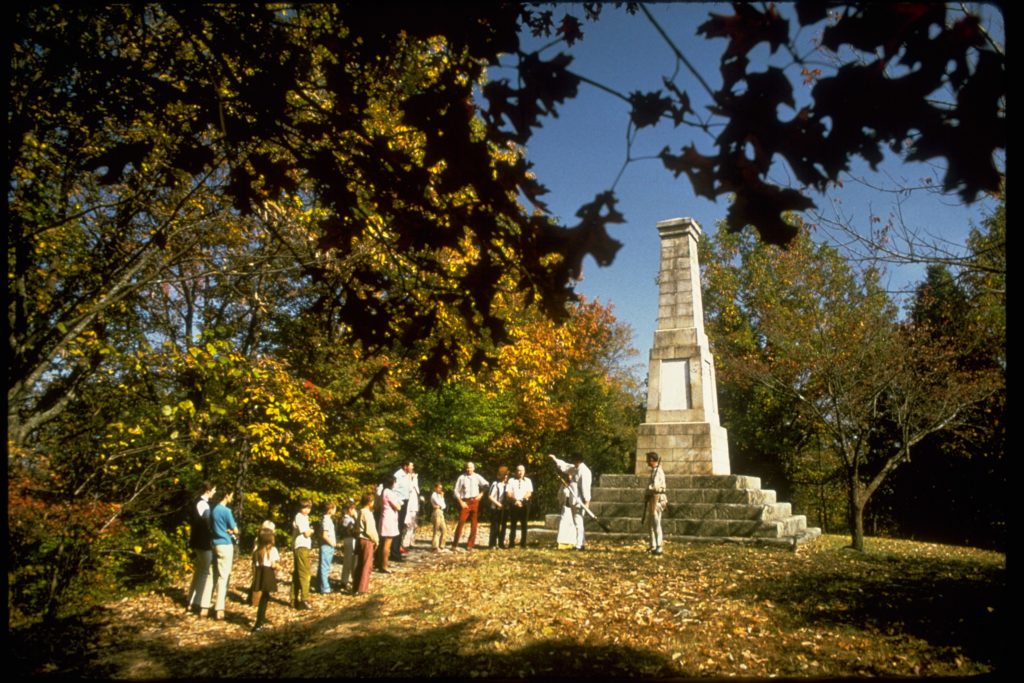
It Was The Patriots Vs. The Tories At Kings Mountain
A force of 1,800 backcountry or “Overmountain” men defeated a force of 1,000 Tories at King’s Mountain on October 7, 1780.
According to British commander Henry Clinton, the American victory “proved the first Link of a Chain of Evils that followed each other in regular succession until they at last ended in the total loss of America.”
Kings Mountain marked the first major American victory following the British invasion in Charleston that took place 6 months earlier. This pivotal battle destroyed a significant section of Lord Cornwallis’ army and halted the British advance into North Carolina.
Kings Mountain: America’s Most Forgotten Battle That Changed the Course of the American Revolution, by Phillip Thomas Tucker, is a fascinating account of this little-known yet quite important battle.
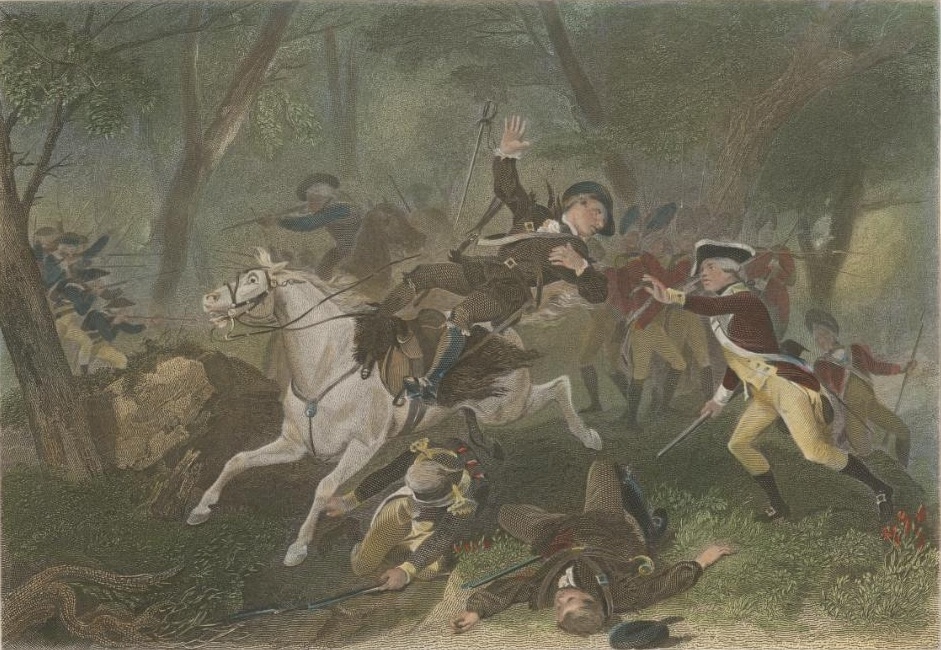
Things To See & Do At Kings Mountain
Believe it or not, most of the battles/skirmishes of the Revolutionary War actually took place in South Carolina. At Kings Mountain, you can learn about an hour-long battle which changed the course of the Revolutionary War.
I recommend beginning your adventure at the Visitor Center. There you will be treated to a 26-minute film, which provides a historical overview of the battle and its importance.
There’s also an exhibit area where you will learn more about why the battle happened, who the Overmountain Men were and how the outcome of this battle helped to change the course of the war.
Then, when you feel like you’ve had enough indoor history, there’s a 1.5 mile battlefield trail you can walk. It’s a beautiful path which takes you along the battlefield. Along the way, you’ll pass several markers for important figures from this battle.
RELATED: South Carolina National Parks
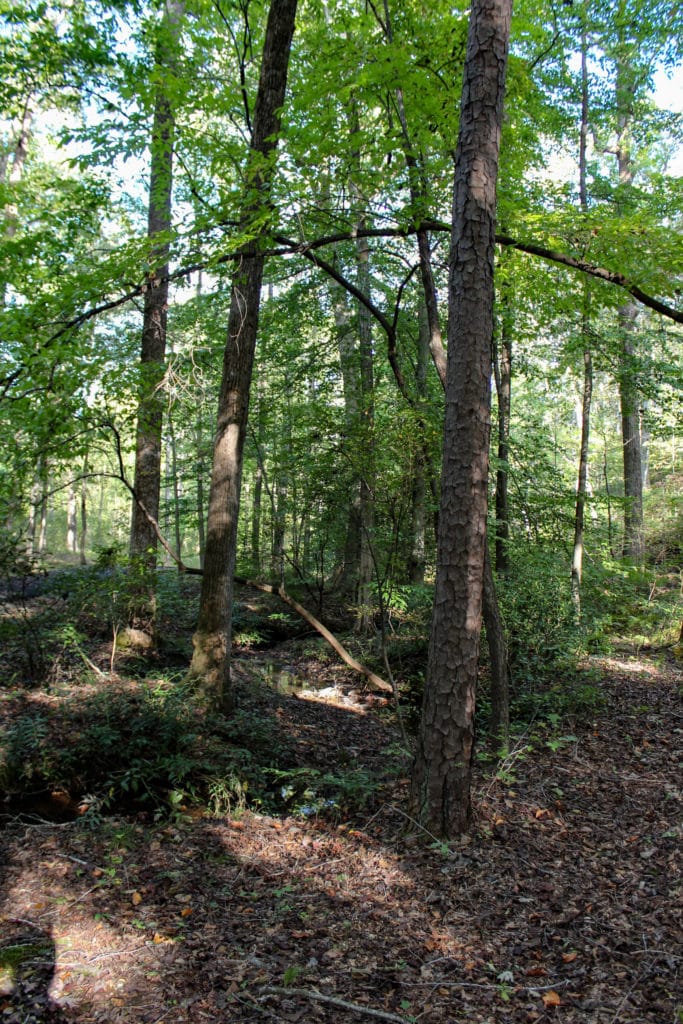
Looking For Some Exercise At Kings Mountain
If the battlefield trail is not a good enough workout for you then there are three backcountry hiking trails offering 16 additional miles of outdoor adventures.
- Park Loop Trail – This 16-mile loop trail goes through both parks. Plan on spending a full day hiking this trail.
- Browns Mountain Trail – This 2.5-mile trail leads from the visitor center to the top of Browns Mountain. This is not a loop trail. You must backtrack to get back to the visitor center. A total hike of 5 miles.
- Clarks Creek (Lake Crawford) – This 3-mile trail leads from the visitor center to Lake Crawford (located in the state park). This is not a loop trail. You must backtrack to get back to the visitor center. A total hike of 6 miles. (Source: NPS)
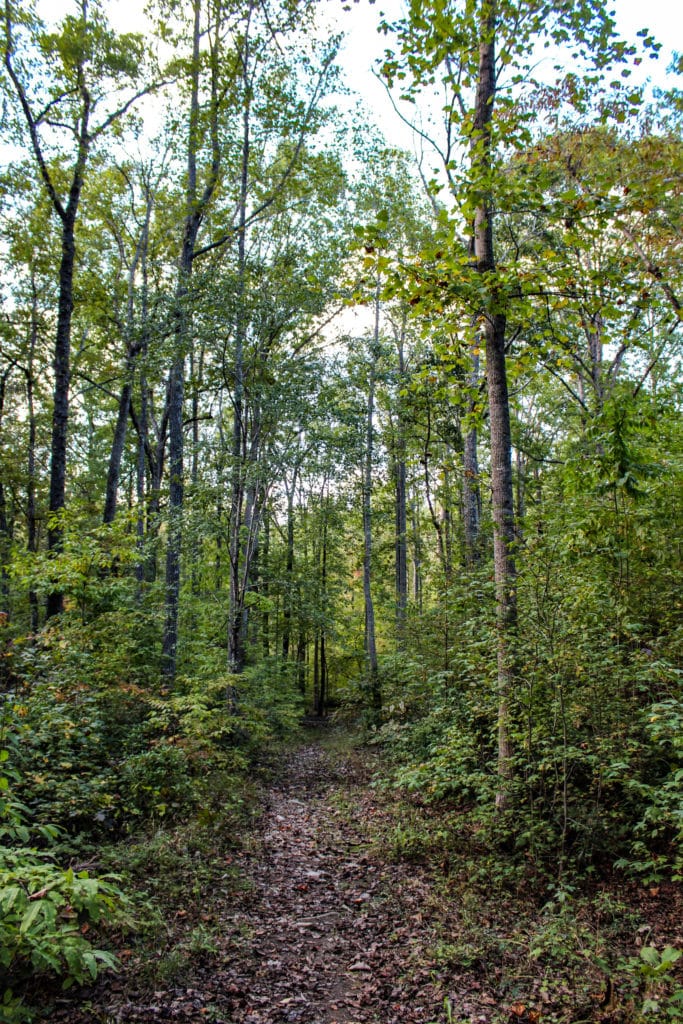
7. Washington Crossing Historic Park
Location: Washington Crossing, Pennsylvania
It’s the stuff of legends and one of my favorite Revolutionary War Battles. Coming in at #7 on our list of the Top 10 Revolutionary War Sites is Washington Crossing Historic Park.
Washington crossed the Delaware River on Christmas night 1776 in a raging snowstorm. On the next day, he won the Battle of Trenton, New Jersey. Henry Knox was in command of the crossing, the same officer who had dragged the artillery from Fort Ticonderoga for the successful siege of Boston.
Among the men who managed the boats in the dangerous river crossing, amid floating cakes of ice, were the mariners in Colonel John Glover’s Massachusetts regiment, which included blacks, American Indians, and whites. The historic river crossing is commemorated in the two parks, one on each side of the river.
To relive this amazing period in American history, I would recommend reading Washington’s Crossing by David Hackett Fischer. The author brilliantly explains how the campaign unfolded in a sequence of difficult choices by many actors, from generals to civilians, on both sides.
RELATED: 10 MUST-SEE HISTORIC SITES IN PENNSYLVANIA
.jpg)
things to do
The Thompson-Neely Farmstead and Grist Mill served as a temporary regimental army hospital during Washington’s winter campaign of 1776-77.
Bowman’s Hill Tower is a favorite destination for locals and tourists alike. On a clear day, the tower offers a stunning 14-mile bird’s-eye view of the surrounding countryside and Delaware River.
RELATED: New Jersey National Parks
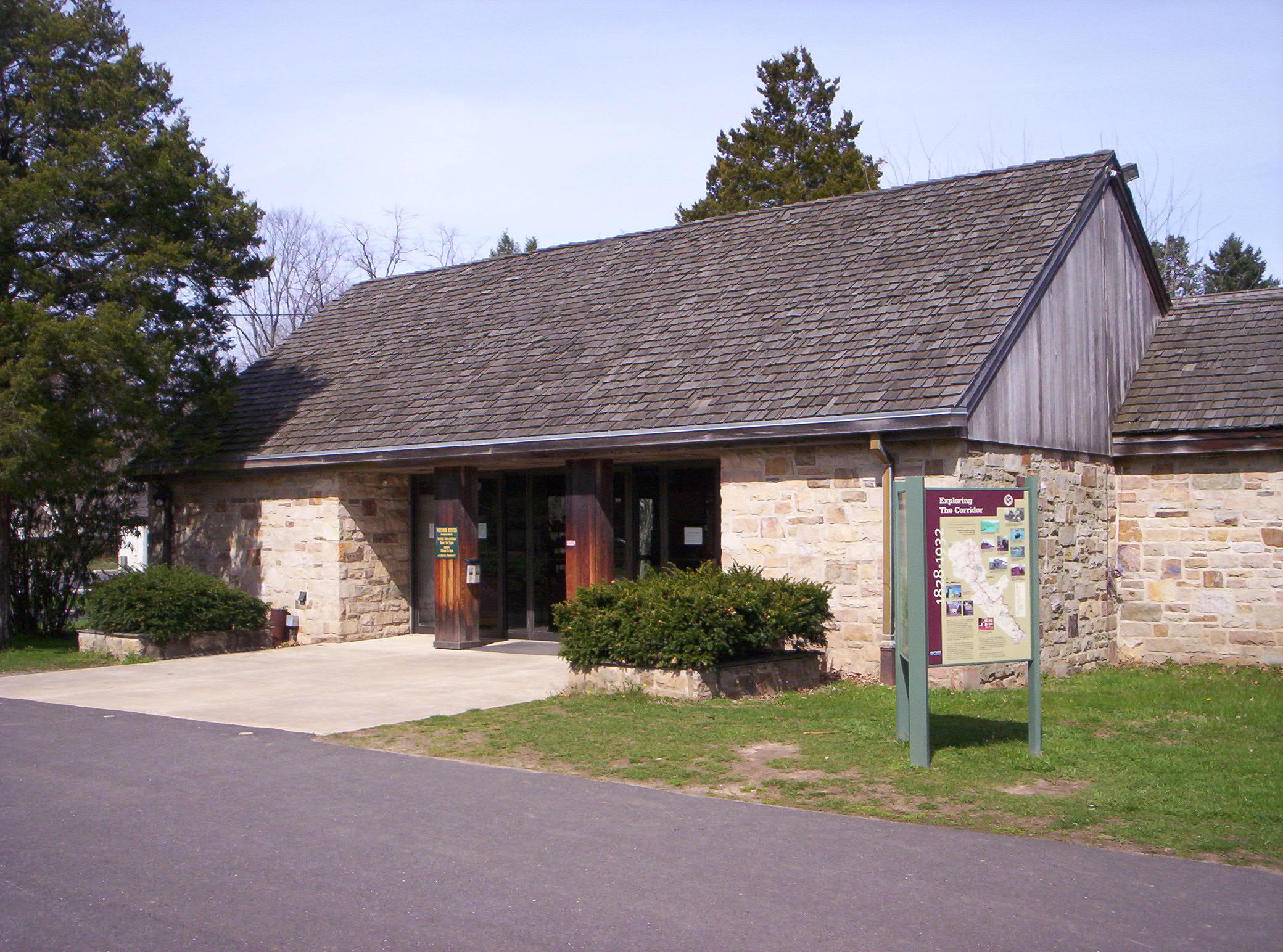
6. Bunker Hill Monument
Location: Charlestown, Massachusetts
Coming in at #6 on our list of the Top 10 Revolutionary War Sites in the Bunker Hill Monument.
On June 17, 1775, early in the Revolutionary War (1775-83), the British defeated the Americans at the Battle of Bunker Hill in Massachusetts. Despite their loss, the inexperienced colonial forces inflicted significant casualties against the enemy, and the battle provided them with an important confidence boost during the Siege of Boston (April 1775-March 1776).
The British had won the so-called Battle of Bunker Hill, and Breed’s Hill and the Charlestown Peninsula fell firmly under British control. Despite losing their strategic positions, the battle was a significant morale-builder for the inexperienced Americans, convincing them that patriotic dedication could overcome superior British military might.
Additionally, the high price of victory at the Battle of Bunker Hill made the British realize that the war with the colonies would be long, tough and costly. (Source: History)
To learn more about this pivotal day in American history, I recommend Decisive Day: The Battle for Bunker Hill by Richard M. Ketchum.
RELATED: 10 BEST NATIONAL PARKS NEAR BOSTON
take a deeper dive into the history of bunker
While you’re there, check out the Bunker Hill Museum. It provides exhibits and visitor services for people interested in learning about the battle and the monument.
RELATED: Massachusetts National Parks
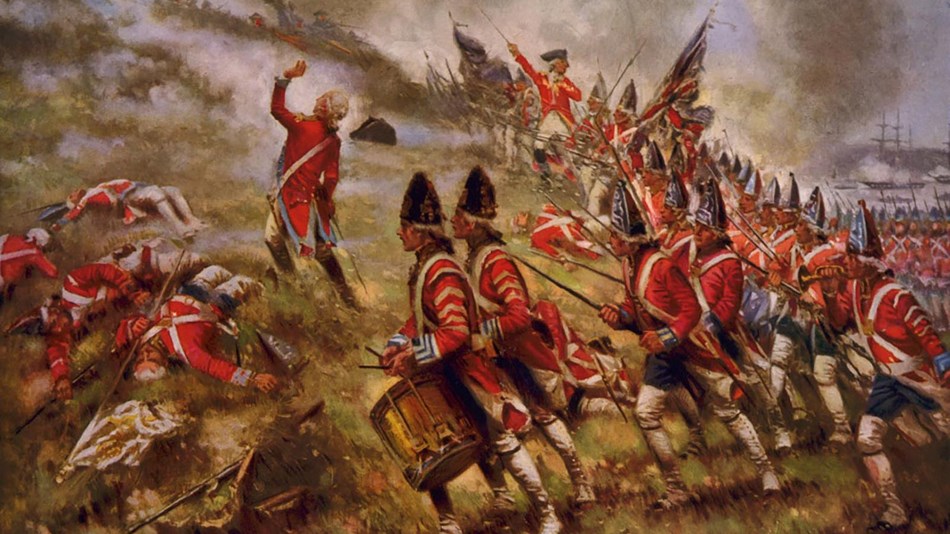
The Top 5 Revolutionary War Sites
5. Saratoga National Historical Park
Location: Stillwater, New York
Kicking off the Top 5 Revolutionary War Sites is the place where the tide of battle began to turn.
At the Battle of Saratoga in 1777, American troops battled and beat a British invasion force, marking the first time in world history that a British Army ever surrendered.
This crucial victory secured essential foreign recognition and support, instigated world-wide wars, affirmed United States independence, and changed the face of the world.
There’s so much that most people don’t know or appreciate about the importance of this battle. To learn more check out The Untold Story of the Battle of Saratoga: A Turning Point in the Revolutionary War (What You Didn’t Know About the American Revolution) by Michael Burgan.
RELATED: 10 MUST-SEE HISTORIC SITES IN NEW YORK
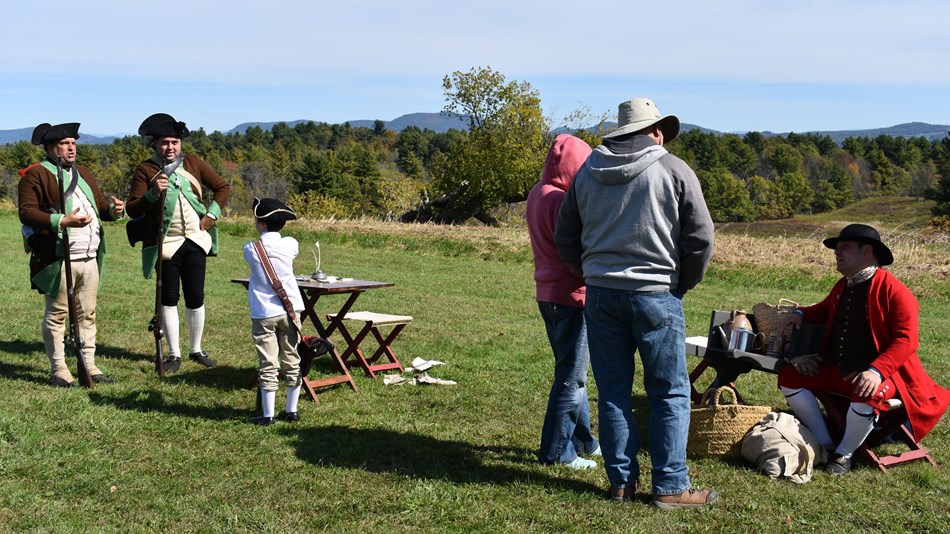
Things To Do At Saratoga National Historical Park
Let’s begin with the history and a tour of the Philip Schuyler Country Estate. Built in 1777, it’s a northern plantation that showcased Schuyler’s wealth and success. Laborers worked in the timber mills, flax mills, grist mills, gardens, and herring fishery, providing the income to sustain this upper class family. You can see it all!
Then there’s the outdoor fun which includes:
- Biking the Tour Road and enjoy the scenery while you do so.
- Climbing Saratoga Monument which includes 188 steps. At the top you will be treated to amazing views of the surrounding area, with up to 30+ mile visibility on clear days.
- Check out Victory Woods. It’s a self-guided, 1/2 mile developed pathway with interpretive signage.
- Hike the Wilkinson Trail and follow in the footsteps of Patriots and Tories alike.
RELATED: New York National Parks
4. Valley Forge National Historical Park
Location: King of Prussia, Pennsylvania
We’re on to the Final Four of our Top 10 Revolutionary War Sites. Coming in at #4 is the Valley Forge National Historical Park.
On December 19th, 1777, 12,000 soldiers and 400 women and children marched into Valley Forge and began to build what essentially became the fourth largest city in the colonies at the time, with 1,500 log huts and two miles of fortifications.
It was where the American Continental Army made camp during the winter of 1777-1778. It was here that the American forces became a true fighting unit. Valley Forge is often called the birthplace of the American Army.
One man who’s expertise would prove crucial to the untested Continental Army was Baron de Steuben. His story is adroitly told in The Drillmaster of Valley Forge: The Baron de Steuben and the Making of the American Army by Paul Lockhart.
I recommend beginning your adventure at the Valley Forge Visitor Center. There’s a wonderful museum exhibit where you’ll learn about how men, women, and children from many different walks of life all struggled together during the winter of 1777-78, and how they ultimately overcame so many hardships in order to march away from Valley Forge a stronger, more unified fighting force.
You can also tour the Encampment Route. It’s a 10-mile driving loop comprised of 9 major tour stops plus additional opportunities to stop and explore Valley Forge.
The route features some of the most scenic views of the park as well as many of the historic sites and monuments.
RELATED: Pennsylvania National Parks
3. Colonial National Historical Park
Location: Yorktown, Virginia
At #3 on our list of the Top Ten Revolutionary War Sites is the Colonial National Historical Park (a.k.a. Yorktown).
In May 1781, General Cornwallis took command of the British soldiers in Virginia and waited for reinforcements to arrive from General Henry Clinton in New York. In mid-August, General Washington and the Comte de Rochambeau, in command of the French army in America, began their march south after learning that the French fleet was sailing for the Chesapeake Bay.
On September 5 the French defeated the British fleet in a battle in the Atlantic Ocean off the Bay. Cornwallis could not be reinforced. By September 26 the American and French armies had arrived at Yorktown with about 18,000 soldiers and put Cornwallis’s 5,500-man force under siege.
On October 19, Cornwallis surrendered, ending the last major battle of the Revolutionary War. The Historical Park includes Historic Jamestowne in Jamestown and the Yorktown Battlefield in Yorktown.
One of my favorite authors is Nathaniel Philbrick. His In the Hurricane’s Eye: The Genius of George Washington and the Victory at Yorktown is a riveting account of this battle and how it brought about an end to the American Revolution.
RELATED: 10 MUST-SEE HISTORIC SITES IN VIRGINIA

things to do
If history is your passion then you won’t be disappointed. The park spans the timelines from pre-colonization, through Colonial Virginia; from the beginning of English Colonial America through the American Revolutionary War; from America’s Independence to the Civil War.
If you love bird watching there’s over 200 various species. Or how about wildlife. It abounds with deer, raccoon, opossum, Red Tail Fox, Mink, Bald Eagle, Wild Turkey and many others.
If you’re looking to get in those steps while enjoying the beauty of nature there’s you can jog or bike the Battlefield Tour roads along the Jamestown 3-5 mile loop drive.
Or if you’re just looking to ride in comfort then you can take the Colonial Parkway in your air-conditioned vehicle.
RELATED: Virginia National Parks
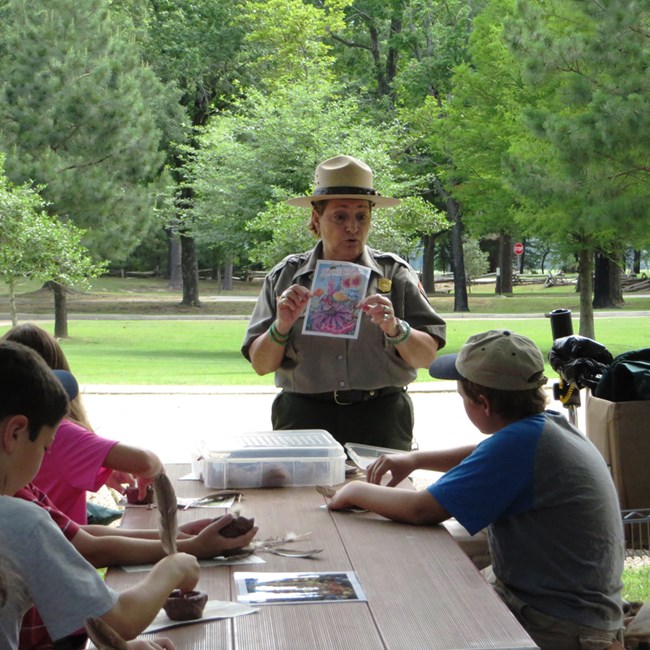
2. Minute Man National Historical Park
Location: Lincoln, Massachusetts
At #2 on our Top 10 List of the Best Revolutionary War Sites is Minute Man National Historical Park.
As a lifelong history buff and former history teacher, I can’t resist a good lesson. I promise you that I’ll keep it short, however, and there’s no homework.
Militia were men in arms formed to protect their towns from foreign invasion and the ravages of war. Minutemen were a small hand-picked elite force which were required to be highly mobile and to able to assemble quickly in the event of a crisis.
These Minutemen were selected from militia muster rolls by their commanding officers. Typically 25 years of age or younger, they were chosen for their enthusiasm, reliability, and physical strength.
By the time of the American Revolution, Minutemen had been a well-trained force for six generations in the Massachusetts Bay Colony. As author and historian Hackett Fisher notes,
“The muster of the Minutemen in 1775 was the product of many years of institutional development…it was also the result of careful planning and collective effort.”

Things To Do At Minute Man National Historical Park
As the National Park Service notes, “Minute Man National Historical Park in Lexington, Lincoln, and Concord, Massachusetts, preserves and interpretes the sites, structures, and landscapes that became the field of battle during the first armed conflict of the American Revolution on April 19, 1775.”
The Minute Man Visitor Center includes a forty-foot mural that portrays the fighting between Colonists and British Regulars and artifacts from the Parker’s Revenge Archaeological investigation. Park Rangers are on duty to answer questions.
While at the visitor center, you can get a map, schedule of programs and events and, for the children, a junior ranger booklet.
You can also explore exhibits about the beginning of the American Revolution, watch a multimedia theater presentation, and browse the museum store run by Eastern National.
RELATED: 25 BUCKET-LIST FAMOUS LANDMARKS IN AMERICA (MUST-SEE)
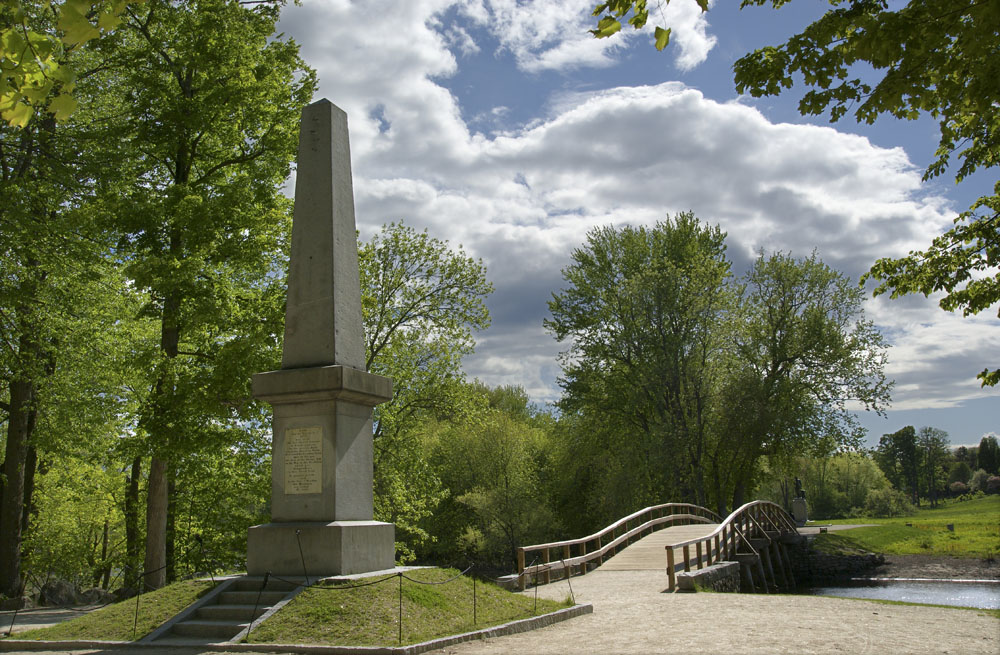
Hike The Battle Road Trail
The park also offers a variety of guided programs to the public.
While you’re there, you can hike the Battle Road Trail. It’s a five mile trail connecting historic sites from Meriam’s Corner in Concord to the eastern boundary of the park in Lexington.
RELATED: Massachusetts National Parks
The Best Revolutionary War Site in America
1. Independence National Historical Park
Location, Philadelphia, Pennsylvania
At #1 on our list of the Top Ten Revolutionary War Sites is the birthplace of America’s liberty–Independence National Historical Park.
As the National Park Service notes, Independence Hall National Historical Park represents the founding ideals of the nation, and preserves national and international symbols of freedom and democracy, including Independence Hall and the Liberty Bell.
The Declaration of Independence and U.S. Constitution were both debated and signed inside Independence Hall, a UNESCO World Heritage Site.
Entrance is by tour only. Admission is first-come, first-served for the remainder of February. Timed entry tickets required from March through December.
There is a $1.00 per ticket handling fee for reserved tickets.
RELATED: 7 AMAZING NATIONAL PARKS NEAR PHILADELPHIA YOU’LL LOVE
.jpg)
For Anyone Who Loves History There’s No Place Quite Like It
For anyone who loves history (and even for those folks who don’t) this is one of the most exciting historical tours. At Independence Hall, visitors learn the stories about the people and events which shaped America.
There’s an old saying that goes, “If this place could only talk.” Well, at Independence Hall, it can talk as the stories come to life about the unique history of a very special place which brought together an amazing group of men who produced not one, but two of the most important documents in the history of the world.

We hold these Truths to be self-evident, that all Men are created equal…”
-Thomas Jefferson, The Declaration of Independence
Take A Deeper Dive
If you love the American Revolution as much as I do and will like to do a deeper dive into the past then I recommend the following books:
- Bunker Hill, A City, A Siege, A Revolution by Nathaniel Philbrick.
- 1776 by David McCullough.
- Beat the Last Drum: The Siege of Yorktown by Thomas Fleming.
- Founding Brothers: The Revolutionary Generation by Joseph Ellis.
- The Radicalism of the American Revolution by Gordon S. Wood.
- A Narrative of a Revolutionary Soldier: Some Adventures, Dangers, and Sufferings of Joseph Plumb Martin by Joseph Plumb Martin.
- Almost A Miracle: The American Victory in the War of Independence by John Ferling.
- The Great Divide: The Conflict between Washington and Jefferson That Defined America, Then and Now by Thomas Fleming.
- John Adams by David McCullough.
- Washington by Douglas Southall Freeman.
Map Of Revolutionary War Sites
List Of Top 10 Revolutionary War Sites
- Independence National Historical Park, Philadelphia, Pennsylvania
- Minute Man National Historical Park, Concord, Lincoln, and Lexington, Massachusetts
- Colonial National Historical Park, Yorktown, Virginia
- Valley Forge National Historical Park, King of Prussia, Pennsylvania
- Saratoga National Historical Park, Stillwater, New York
- Bunker Hill Monument, Charlestown Massachusetts
- Washington Crossing Historic Park, Washington Crossing, Pennsylvania
- Kings Mountain National Military Park, Blacksburg, South Carolina
- Guilford Courthouse National Military Park, Greensboro, North Carolina
- Cowpens National Battlefield, Gaffney, South Carolina
About the Folks Behind More Than Just Parks
You should probably know that we don’t just make this stuff up out of thin air. My sons have spent their entire adult lives exploring and filming America’s national parks and public lands.
As for me, I’m a retired lifelong educator and a proud dad of these two wonderful guys who are hopelessly obsessed with the national parks.
I taught history for over a quarter of a century. Now I enjoy researching and writing articles for More Than Just Parks. I’m always on the hunt for topics where nature and history intersect so please feel free to share any ideas that you might have with me.
We’ve worked with the National Park Service, the Department of Interior, and the U.S. Forest Service for years creating films on important places and issues.
Our work has been featured in leading publications all over the world and even some people outside of our immediate family call us experts on the national parks.
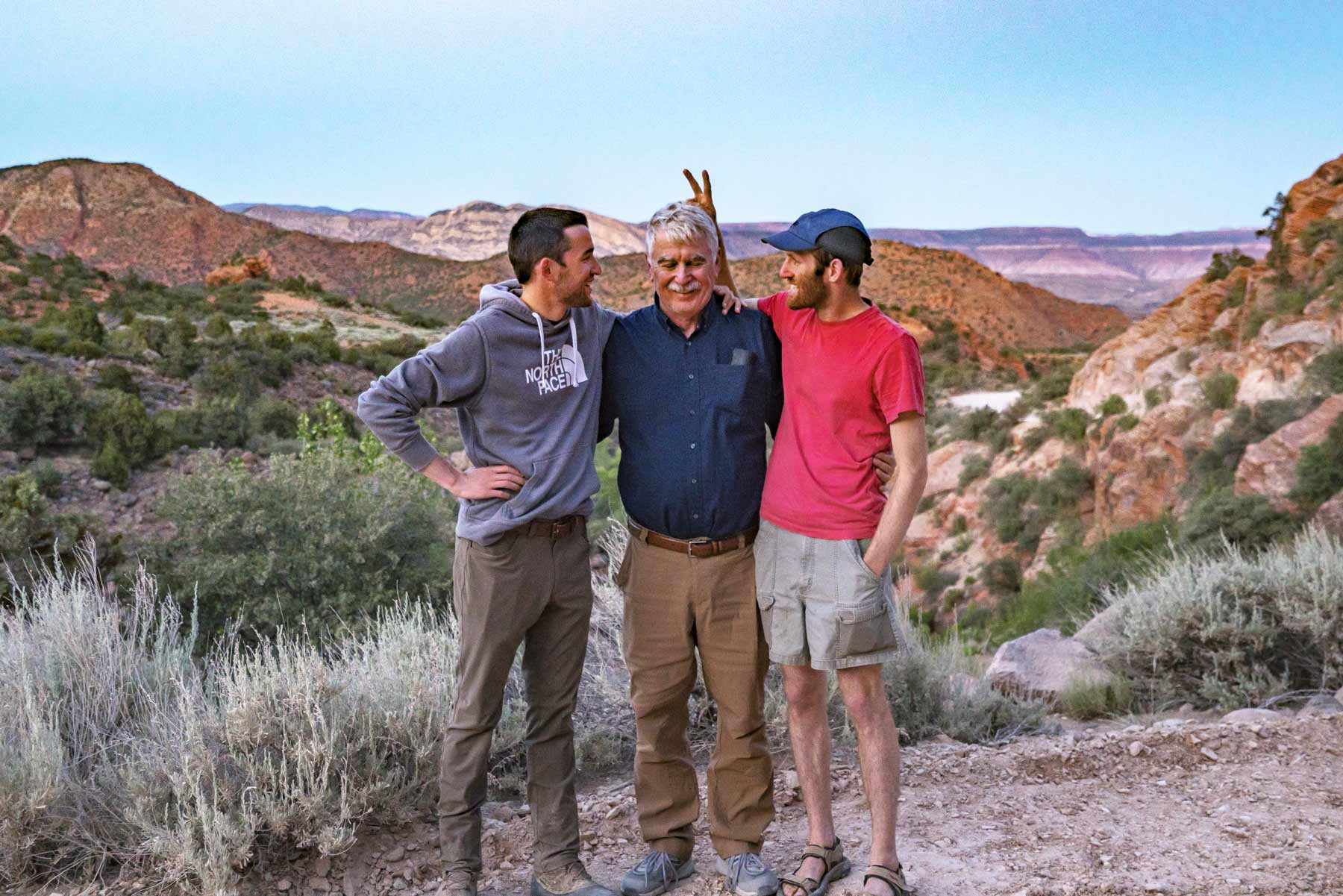
Meet The Parks Brothers
We’re Jim Pattiz and Will Pattiz, collectively known as the Pattiz Brothers (and sometimes the Parks Brothers) and we absolutely LOVE the national parks.
Our goal here at More Than Just Parks is to share the beauty of America’s national parks and public lands through stunning short films in an effort to get Americans and the world to see the true value in land conservation.
We hope you’ll follow our journey through the parks and help us to keep them the incredible places that they are. If you’re interested in joining the adventure then sign up below!
Helpful Articles
If you’re a history buff then check out our article on the Top 10 Civil War Sites
Massachusetts National Parks: 18 SURPRISING MASSACHUSETTS NATIONAL PARKS (+ Photos)
New York National Parks: 25 EPIC New York State National Parks To Visit
North Carolina National Parks: 12 Epic North Carolina National Parks Worth Visiting
Pennsylvania National Parks: 22 EPIC Pennsylvania National Parks Worth Visiting (Guide + Photos)
South Carolina National Parks: 8 Epic South Carolina National Parks Worth Visiting
Virginia National Parks: 30 EPIC Virginia National Parks Worth Visiting (Helpful Guide + Photos)

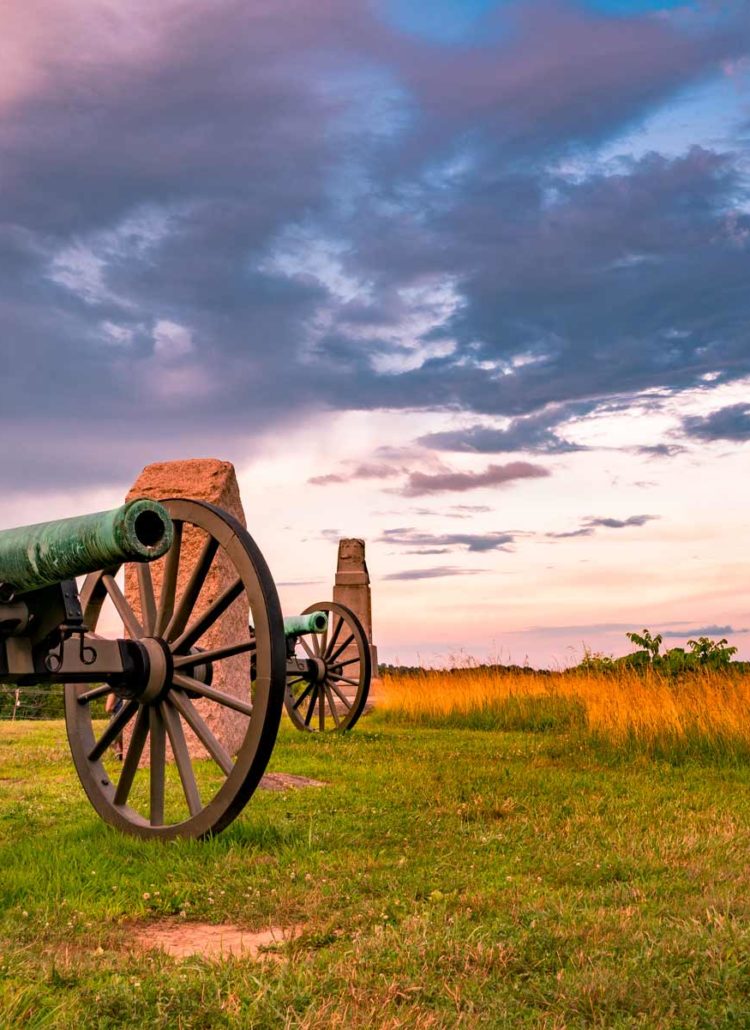

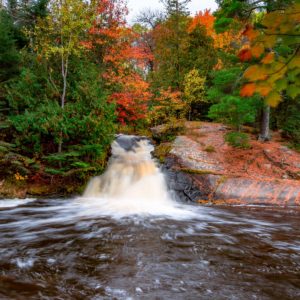

Hi, I loved your article!! My 4th grt fought at Battle of Saratoga & handpicked for the Rifle Regiment (a sharpshooter).
I just want to add a few more bucket list Revolution sites;
Colonial Williamsburg! This is an amazing city preserved from the 1700s. There are 4 original taverns. George & Martha lived there and u can visit their church. The Custis children are buried there. The 5th Regiment of Virginia trained there.
For top history buffs add a few of Washington’s favorite taverns like Gadsby’s Tavern or Black Powder Tavern by Valley Forge or Frances Tavern in New York.
Lastly, visit Mt. Vernon, G. Washington’s home. Many items they used & pictures are still there. These sites are not Natl Parks But your readers will find them historically fascinating!!
Jim
Jim:
Thanks so much for your kind words. I appreciate your thoughtful suggestions as I’m always looking for suggestions for future articles. You might want to check out our Top 10 Civil War Sites too.
All the best,
Tony
Thank you, Tony. This list is great to have. I’m planning a Boston area trip this Fall, and this helps. I made it to the Carolinas last year and hit the battlefields on your list. Unfortunately, some of the visitor centers were closed, but still very interesting. I’ve checked off everything on your Civil War list, so time to get busy on the Revolution!
Thank you so much Tony! I am a teacher in PA and hope to retire in 2 years and plan to travel to the Revolutionary War sites on your list. Very grateful for the research and information you have shared here! Love it. I also have two sons… Drew is 31 and Quinn 28. Much respect. Alan
Thank you so much for this great article. My 4th great-grandfather was a black Minuteman that fought at Concord, Lexington and Bunker Hill. I’m planning a trip back there next year. This article was very helpful! So glad I found it.